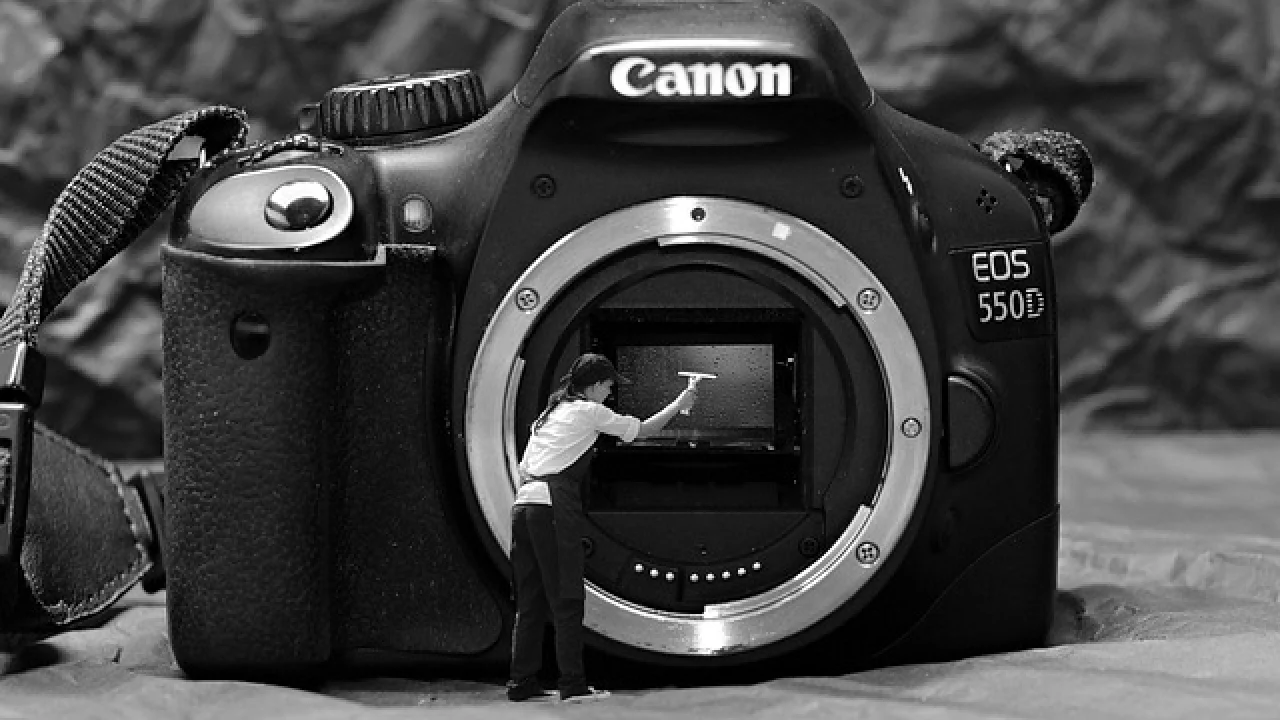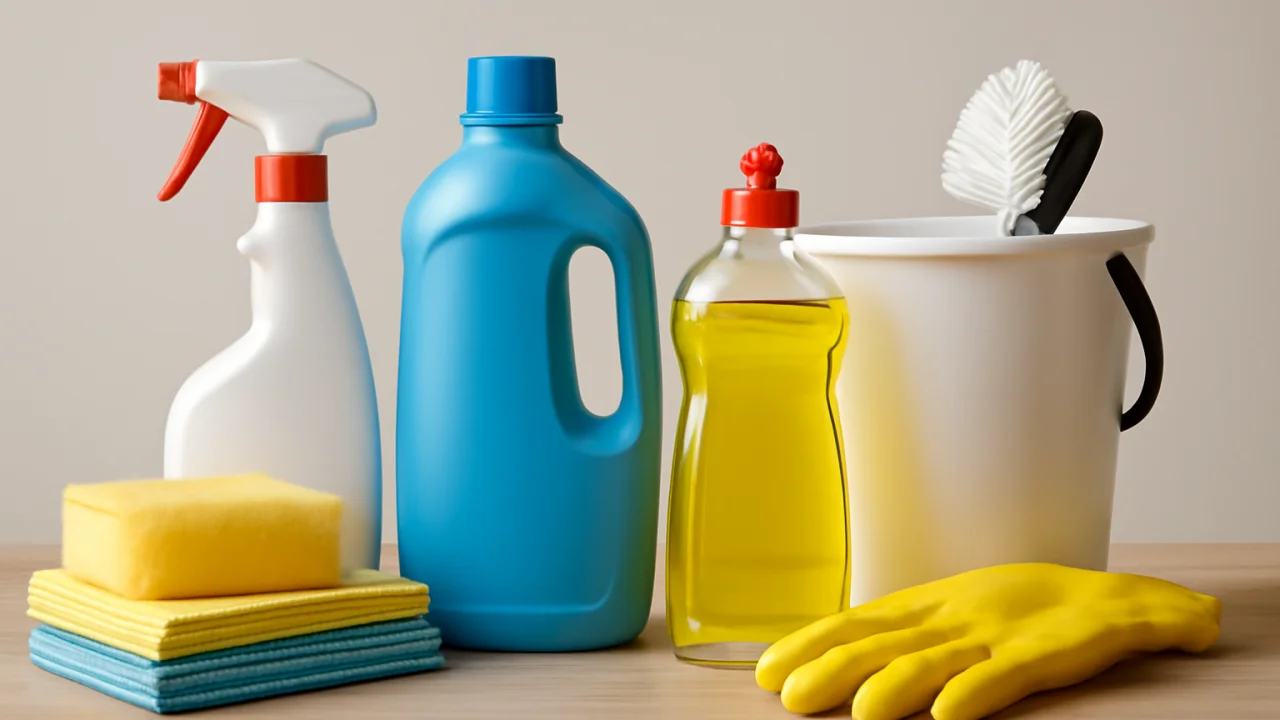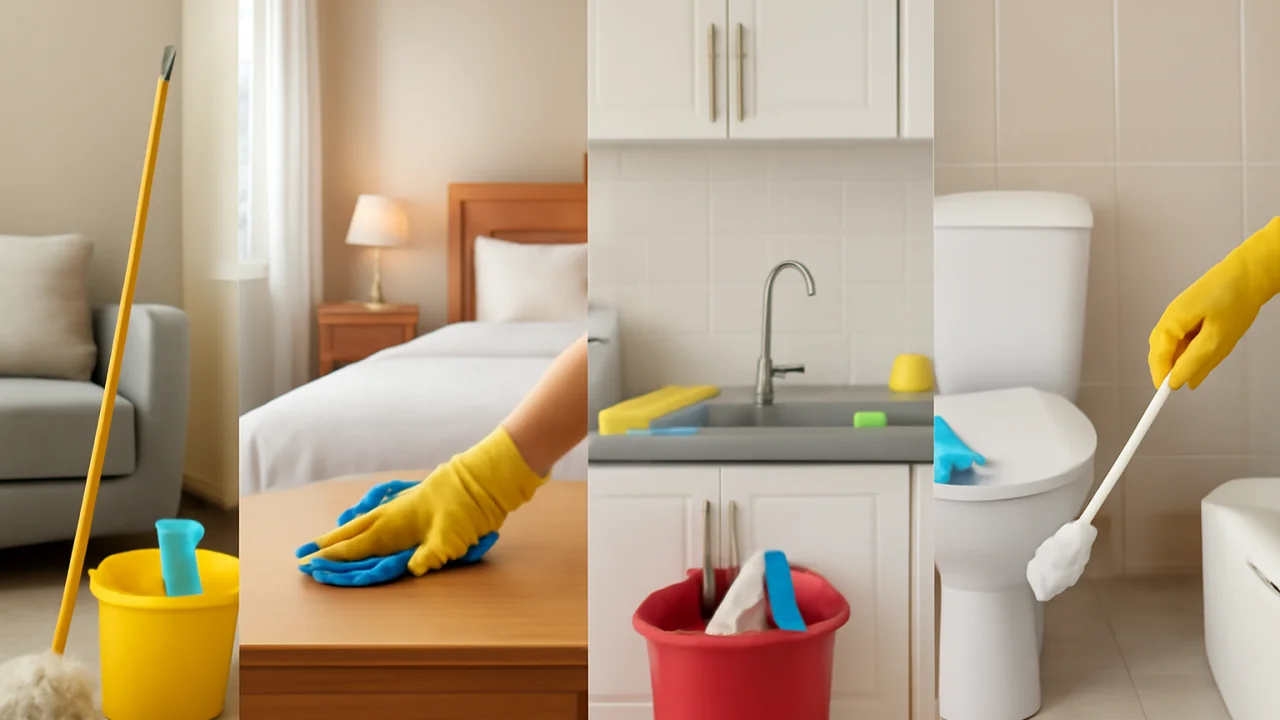
Ultimate Cleaning Tips: Expert Strategies for a Spotless Home
📑 Contents
Ultimate Cleaning Tips: Expert Strategies for a Spotless Home
Keeping your home clean can feel overwhelming, but with the right strategies, it becomes manageable and even enjoyable. Whether you're a busy professional, a parent, or simply someone who wants to maintain a tidy space, these expert cleaning tips will help you achieve a spotless home efficiently. This guide covers essential supplies, room-by-room advice, stain removal, cleaning routines, and eco-friendly solutions. Let’s dive into the best ways to keep your living space fresh and inviting.
Essential Cleaning Supplies for Every Home

Before you begin any cleaning task, ensure you have the right tools. The right supplies make cleaning faster, more effective, and less frustrating. Here’s a table of must-have cleaning items and their uses:
| Cleaning Supply | Best Uses | Pro Tip |
|---|---|---|
| Microfiber Cloths | Dusting, wiping surfaces, cleaning glass | Wash frequently to prevent spreading dirt |
| All-Purpose Cleaner | Kitchens, bathrooms, general surfaces | Choose a non-toxic option for safety |
| Baking Soda | Deodorizing, scrubbing sinks and tubs | Mix with vinegar for tough stains |
| Vacuum Cleaner | Carpets, rugs, floors, upholstery | Clean filters regularly for best results |
| Mop and Bucket | Hard floors (tile, laminate, hardwood) | Use two buckets: one for clean water, one for dirty |
| Rubber Gloves | Protecting hands from chemicals and grime | Replace gloves if they develop holes |
| Disinfectant Wipes | Quick cleaning of high-touch areas | Keep packs in kitchen and bathroom for convenience |
Room-by-Room Cleaning Tips

Kitchen Cleaning Hacks
The kitchen is a high-traffic area prone to spills, splatters, and grease. To keep it hygienic:
- Wipe down countertops and stovetops daily to prevent buildup.
- Clean out the fridge weekly—discard expired items and wipe shelves with a baking soda solution.
- Run the dishwasher empty with vinegar once a month to remove odors and limescale.
- Degrease the microwave by heating a bowl of water and lemon juice for 3 minutes, then wipe clean.
- Sanitize sinks with a mix of baking soda and vinegar, followed by hot water.
Bathroom Deep Cleaning
Bathrooms can harbor bacteria and mold. Keep yours fresh with these steps:
- Spray shower walls and doors with a daily cleaner to prevent soap scum.
- Scrub grout with a toothbrush and a paste of baking soda and water.
- Disinfect toilet handles, light switches, and faucet handles regularly.
- Replace towels and wash bath mats weekly to prevent mildew.
- Polish mirrors with a microfiber cloth and a vinegar-water solution for streak-free shine.
Living Room and Bedroom Refresh
Living spaces can quickly accumulate dust and allergens. Here’s how to keep them clean:
- Dust surfaces from top to bottom, starting with ceiling fans and shelves.
- Vacuum carpets, rugs, and upholstery weekly—use attachments for corners and under furniture.
- Wash throw pillow covers and blankets every two weeks.
- Organize clutter into baskets or bins to maintain a tidy look.
- Wipe down electronics with a dry microfiber cloth to prevent static and dust buildup.
Stain Removal Techniques for Common Messes

Stains are inevitable, but with the right approach, most can be removed. Here are solutions for common household stains:
- Red Wine: Blot (don’t rub) the stain, sprinkle with salt, then rinse with cold water and apply a mixture of hydrogen peroxide and dish soap.
- Coffee: Blot immediately, then treat with a solution of vinegar, water, and a drop of dish soap.
- Grease: Sprinkle baking soda or cornstarch to absorb, then wash with hot soapy water.
- Ink: Dab with rubbing alcohol using a cotton ball, then rinse with cold water.
- Pet Stains: Blot up moisture, sprinkle baking soda, vacuum after 10 minutes, then clean with an enzyme-based cleaner.
Time-Saving Cleaning Routines
Consistency is key to a clean home. Establishing simple routines prevents messes from piling up. Here’s a sample schedule:
| Frequency | Tasks |
|---|---|
| Daily | Make beds, wipe kitchen counters, wash dishes, sweep high-traffic floors |
| Weekly | Vacuum throughout, mop floors, clean bathrooms, change bed linens, dust surfaces |
| Monthly | Deep clean appliances, wash windows, declutter closets, wipe baseboards |
| Seasonally | Flip mattresses, clean behind/under furniture, wash curtains, organize pantry |
Adjust routines to fit your household’s needs. Involve family members by assigning age-appropriate chores.
Decluttering for Easier Cleaning
A clutter-free home is easier to clean and maintain. Try these decluttering strategies:
- Adopt the “one in, one out” rule for clothes and items.
- Use storage solutions like baskets, bins, and drawer organizers.
- Sort through mail and paperwork daily to prevent piles.
- Donate or recycle items you no longer use or need.
- Keep countertops and tables as clear as possible for quick cleaning.
Eco-Friendly Cleaning Solutions
Green cleaning methods are safer for your family and the environment. Many effective cleaners can be made at home:
- All-Purpose Spray: Mix equal parts white vinegar and water; add a few drops of essential oil for fragrance.
- Glass Cleaner: Combine 2 cups water, 1/2 cup vinegar, and 1/4 cup rubbing alcohol.
- Scrubbing Paste: Mix 1/2 cup baking soda with enough water to form a paste for sinks and tubs.
- Wood Polish: Blend 1/4 cup olive oil with 1/4 cup vinegar; apply with a soft cloth.
Always label homemade solutions and store them out of reach of children and pets.
Frequently Asked Questions
How can I motivate myself to clean regularly?
Set a timer for 15–20 minutes and tackle one task at a time. Playing music or listening to podcasts can make the process more enjoyable. Breaking tasks into small, manageable chunks prevents overwhelm.
What is the best way to clean pet hair from furniture?
Use a damp rubber glove or a lint roller to lift pet hair from upholstery. Vacuum with an upholstery attachment for deeper cleaning. Regular grooming of pets also reduces shedding.
How do I prevent mold and mildew in the bathroom?
Ensure good ventilation by running an exhaust fan or opening a window. Wipe down wet surfaces after showers, and wash shower curtains and mats regularly to prevent mold growth.
Are natural cleaning products as effective as commercial ones?
Yes, for most everyday cleaning tasks, natural products like vinegar, baking soda, and lemon are highly effective. For heavy-duty disinfection (e.g., after illness), commercial disinfectants may be necessary.
How often should I deep clean my home?
Deep cleaning is best done seasonally—about 3–4 times a year. This includes tasks like washing windows, cleaning behind appliances, and organizing storage areas.
Summary
A clean home is achievable with the right approach, supplies, and routines. By breaking tasks into manageable steps, using effective stain removal techniques, and incorporating eco-friendly solutions, you can maintain a












bilcez
Kredi kartı borçlarını azaltmak için harcamalarınızı kısıtlayın, asgari ödeme yerine borcun tamamını ödemeye çalışın, faiz oranlarını düşürmek için bankalarla görüşün ve bütçe oluşturun. :) :)
Reply